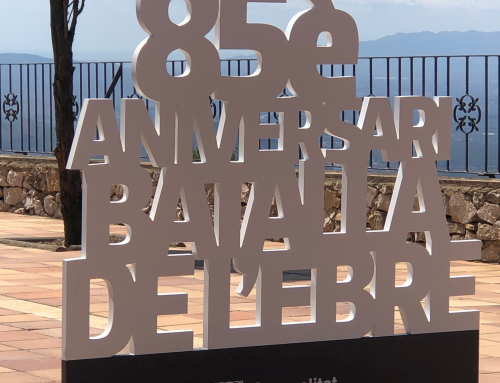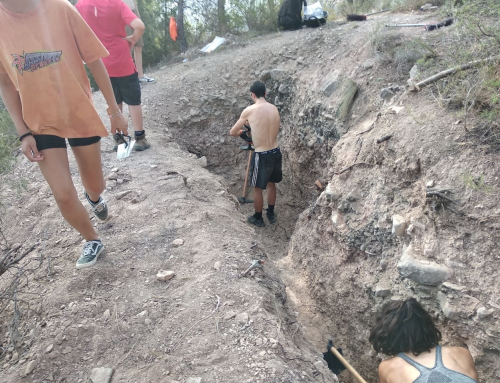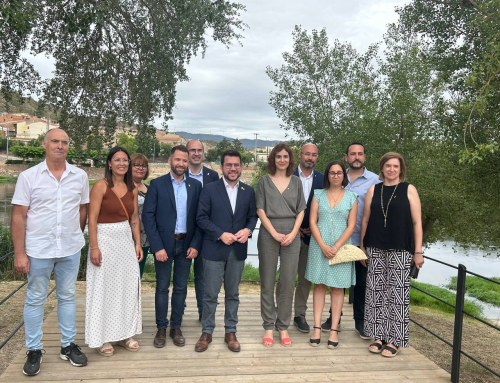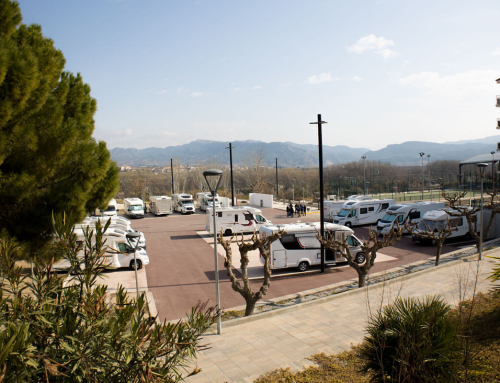Due to its strategic location, Ascó has on numerous occasions witnessed important historical events. In 1938, Ascó was once again the scene of a key episode in our country’s most recent history. For 115 days, one of the toughest and most transcendent battles of the Spanish Civil War (1936-1939) took place: the Battle of the Ebro.
During the last few years, different places that witnessed the fighting (bunkers, trenches, shelters…) have been recovered and memorials and interpretation centers have been created with the aim of promoting the historical memory of the Spanish Civil War. The following itinerary by car will take you to 5 different historic spots located in the municipality of Ascó and its surroundings (access is open to everybody and visits are free of charge).
Calvari trenches
The starting point of the route is at the southern entrance to the village, where there is a path to access the hermitage of the Calvari on foot (approximately 15 minutes). The views from the top of the hill are amazing! From there, you can see how the Ebro forms a natural border that was used by both sides during the war. A few meters from the hermitage, you will see several lines of trenches that were built at the time in order to take advantage of this strategic position.
The Reguers bunker
A little less than a kilometer away from the trenches is the second point of the itinerary. By car, you will have to continue along the C-12B road and take the first exit on the left. Soon you will find a defensive construction overlooking the river. This concrete bunker was built by Franco’s army when they reached the Ebro river and was used to defend the railway line and to control the area. The bunker was part of a more extensive set of fortifications that reached the top of the Fatarella mountain range, strategically located and connected to each other through an extensive and diversified line of trenches.
The Camposines Memorial
If you continue in the direction of Gandesa, after about 10 km of driving through landscapes of pine trees, vineyards, almond trees and olive fields, you will find the Camposines Memorial on your left. Built on top of an old trench, the memorial is a space dedicated to mourning and to the memory of all the combatants who took part in the battle and lost their lives. The memorial contains information on historical events and the soldiers. It is a good place to understand the evolution of the Battle of the Ebro and learn a little more about the participation of the soldiers of the International Brigades.
The Camp of the XV Army Corps
To get to the next spot, you will need to take the car again and follow the C-12B road for a few meters until you find, on the right, the turnoff to Fatarella. After about 8 km and once you have passed the village, follow the T-733 for about another 3 km until you reach the Camp of the XV Army Corps. This is definitely one of the most impressive spots of the Battle of the Ebro: a large republican camp built in 1938, where around 5,000 republican soldiers lived during the 115 days that the battle lasted. Thanks to its strategic location, the camp became a
place of instruction, distribution of provisions and ammunition and a place where assistance to the wounded soldiers was provided. Although only the structure and the different rooms can be seen nowadays, it is quite impressive to observe the shelters dug into the rock that soldiers used to protect themselves from the attacks of Franco’s aviation.
The old boat crossing
To visit the last spot of the route, you will need to return to Ascó on the T-733 road (approximately 10 km)
and cross the bridge by car. You can also cross the bridge by bike or on foot, on the adapted footbridge on the side. Once on the other side, turn right and keep walking along the river and you will soon reach the old boat crossing of Ascó. This crossing was an important place during the Spanish Civil War, as it enabled communication between republican forces and was also used as a means of supply of products and ammunition.
Which one of these historic spots would you like to visit first? If you want to know more about the Battle of the Ebro, you will find more information in our article.








